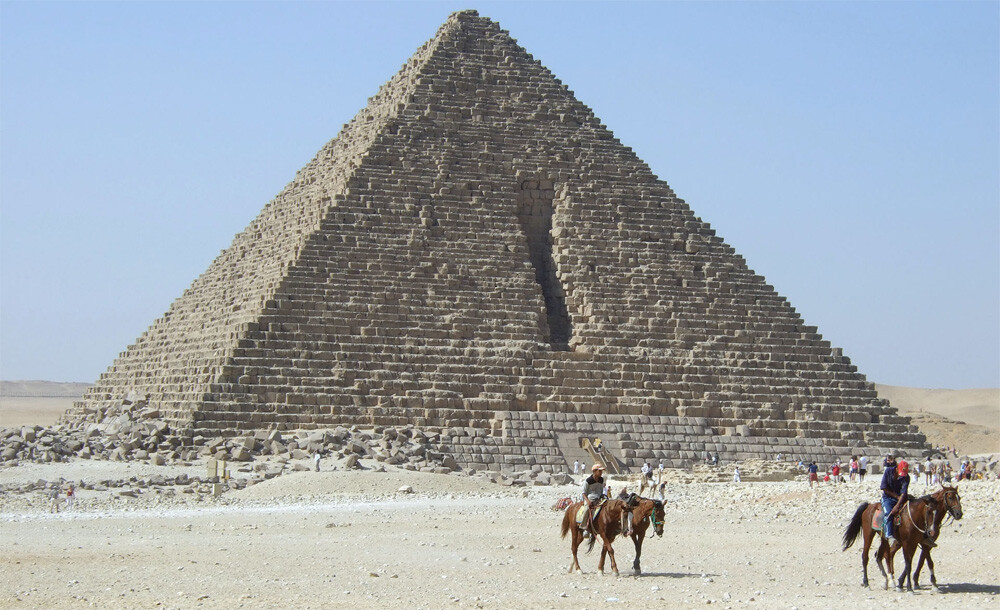The Bonkers Plan To Disassemble The Pyramids

The 12th century was a long time ago, by most measures. But back then, the Pyramids of Giza were just about as ancient as they are today. And the young sultan of Egypt, Al-Aziz Uthman, decided to demolish them.
Sources aren't sure why. Some say that he believed treasure lay buried under the Pyramid of Menkaure—not just inside chambers within but underneath the entire thing. Others say he wanted to raze the pyramids so he could use the stone to build a new city wall. This seems a credible explanation, as other Egyptian leaders had torn down smaller pyramids for their stone.
Al-Aziz did not seem very concerned with the pyramids' historical significance. In fact, he didn't even know the pyramids' historical significance. He knew they were very old, but people around then didn't know just who built the pyramids or why. Long stretches even went by in which people didn't know they were the tombs of kings at all, theorizing instead that maybe they were ancient grain silos.
Don't Miss
The sultan ordered his people to get to work tearing down the Pyramid of Menkaure. Things didn't progress very far. You know how it was stunningly hard to construct buildings that large without modern machinery? Destroying buildings that large without modern machinery turned out to be pretty hard too. The workers managed to loosen some of the huge blocks, which fell to the desert floor and surely flattened many assembled onlookers, but it was such a slow process that Al-Aziz finally called them off. The gash they made is still there today.

That wasn't the last time someone tried this scheme. Modern Egypt started in the 19th century, under the ruler Muhammad Ali Pasha, who wanted to tear apart the apart the pyramids and use the rubble to dam the Nile. He'd be getting rid of the old and giving it new life in serving modern technology, he reasoned.
The way the story goes, it fell on his French head engineer, Linant Pasha, to save the pyramids. Linant volunteered to lead a commission studying the costs of the project, and thanks to some creative math, he convinced the sultan that he could save a lot of money by simply getting the stone they needed out of a quarry.
We say "the way the story goes" because though this is a popular story, it appears that the ultimate source for Linant's contribution is Linant himself. And while Linant told the tale many times, he changed some major facts over the years, such as exactly which sultan be had been serving. It's possible that the Egyptian engineers concluded that they should quarry the stone, using normal calculations, rather than any heroic manipulation. Rubble is actually quite cheap.
Want to get all of this week's Egypt articles packaged together in one shot, so you don't miss a thing? Subscribe to the weekly Saturday Morning Cracked newsletter:
Follow Ryan Menezes on Twitter for more stuff no one should see.
Top image: kallerna/Wiki Commons
